This post contains affiliate links. Full disclosure statement here.
I know that my child care children are learning with Mother Goose Time curriculum. I see it in their play, as they are engaged in activities, in their conversation, as they apply learned skills throughout the day and through feedback from their parents. In addition to this, as Early Childhood Education professionals, we need to assess how well children are learning and if they are being taught effectively. We also need to know if they are making progress and meeting proficiency benchmarks. Then I can plan and adapt activities for each child intentionally.

As the children are participating in the Mother Goose Time curriculum, they are naturally exposed to skills which support their ongoing development in all areas: social-emotional, physical, language and cognitive development.
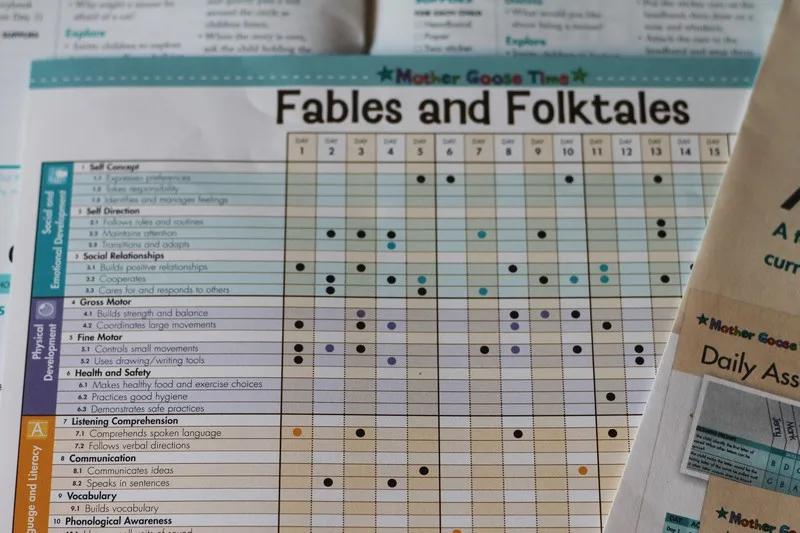
Assessment of young children should be play-based and observed in the natural flow of the day. Authentic assessment uses documentation gathered during everyday experiences to track learning over time rather than using something that is not part of the child’s regular routine, such as standardized testing. Everyday experiences most accurately show what children are learning and the progress they are making.
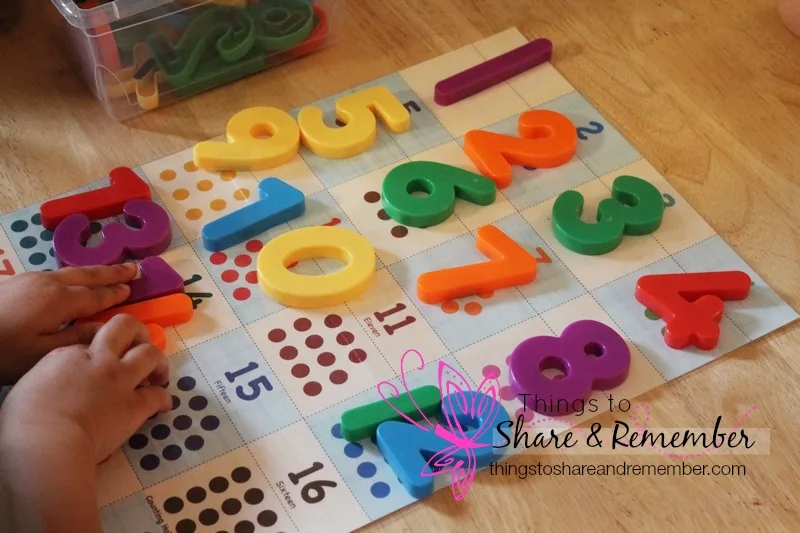
Mother Goose time is a research based curriculum. It aligns with Wisconsin’s Model Early Learning Standards which helps me, since I participate in Youngstar, which is the Wisconsin state’s quality improvement program for Early Childhood Education programs.
Authentic Assessment with Mother Goose Time
This is how I document learning:
- ASQ screener when children start care and education in my center. This type of screener is required for higher ratings by YoungStar in my state.
- Assessment of current skills (including the Baseline Assessment from Mother Goose time). Assessments on file are also required for YoungStar.
- Goal setting (1-3/month). Learning objectives need to be created for each child. Learning takes time so we need to allow children many opportunities to practice a new skill. Provide the information in many different ways before moving on to another objective. A child may not be showing interest so it’s okay to set new learning objectives and return to this one at later time. The objective could be repeated from month to month if the child is still interested and you feel the child is making progress. Determine if the child has mastered an objective. Consider what materials or types of activities you could provide to help the child succeed.
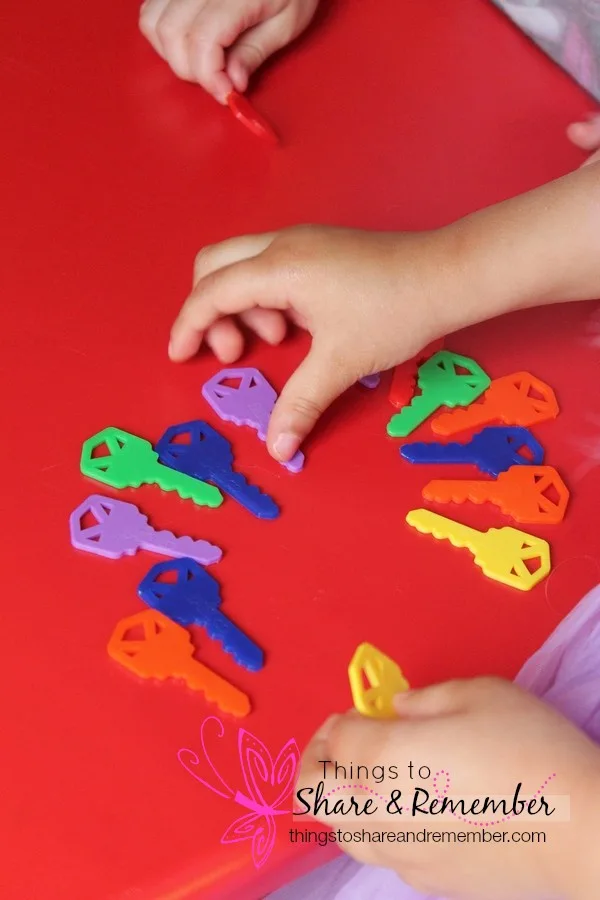
Then I will use the Mother Goose Time lessons, and other activities I incorporate, to complete the following:
- Observe skills as they naturally occur.
- Link observation to skill benchmark.
- Save work samples.
- Use assessment to inform lesson planning.
A Baseline Assessment Kit was included with the August kit. It’s “A toolkit to capture a snapshot of where each child currently is developmentally on his unique learning journey.” It provides all I need to assess where children currently are in their development while we learn. It will allow me to create individual goals for each child.
The baseline assessment tool is the first step in the system. It includes:
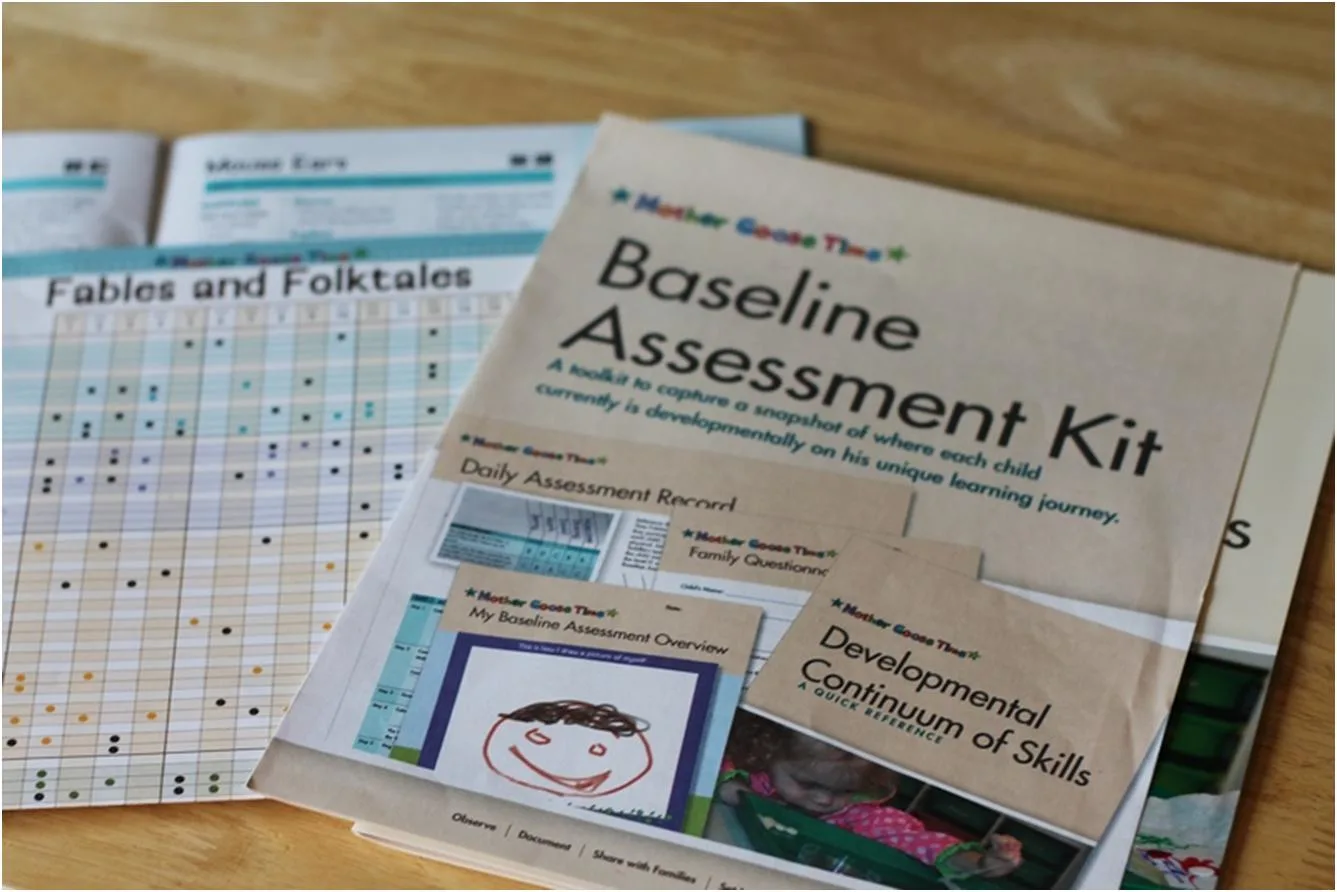
- Daily Assessment Record
- Developmental Continuum of Skills Booklet
- Developmental Continuum of Skills Poster: explains learning benchmarks for children birth through age eight.Use this chart to understand where your child is developmentally in his learning journey of the 33 skills.
- My Baseline Assessment Overview for each child
- Family Interview Form for each child.

Mother Goose Time believes that learning is a process. I agree with this. We don’t teach one skill, experience it and then we move on to the next skill. Of course it takes time to learn and a variety of experiences before a child gains a skill. Each child will also learn at a different rate. So authentic assessment allows us to capture learning as it happens. the Mother Goose Time curriculum system embeds assessment prompts within all lesson plan activities so that you can naturally document your child’s learning progress over time through natural and intentional observations.
How assessing early learning with Mother Goose Time works:
1. Find the Stars: Each day an activity or two will have a star next to the title so you know that is a skill you will observe and document.

2. Observe Child – Use Assessment Prompt, Record Data: Two assessment prompts are provided at the end of each starred activity. Observe and record the child’s level on the Daily Assessment Record.
- If the child can do the prompted skill on his own, mark level D.
- If the child can do the prompted skill but only with help, mark level C.
- If the child cannot do the prompted skill, read the ‘simplify’ prompt that is printed in the Teacher guide. If the child can do the simplified prompt, mark level B or B”. This is similar to a toddler level of development.
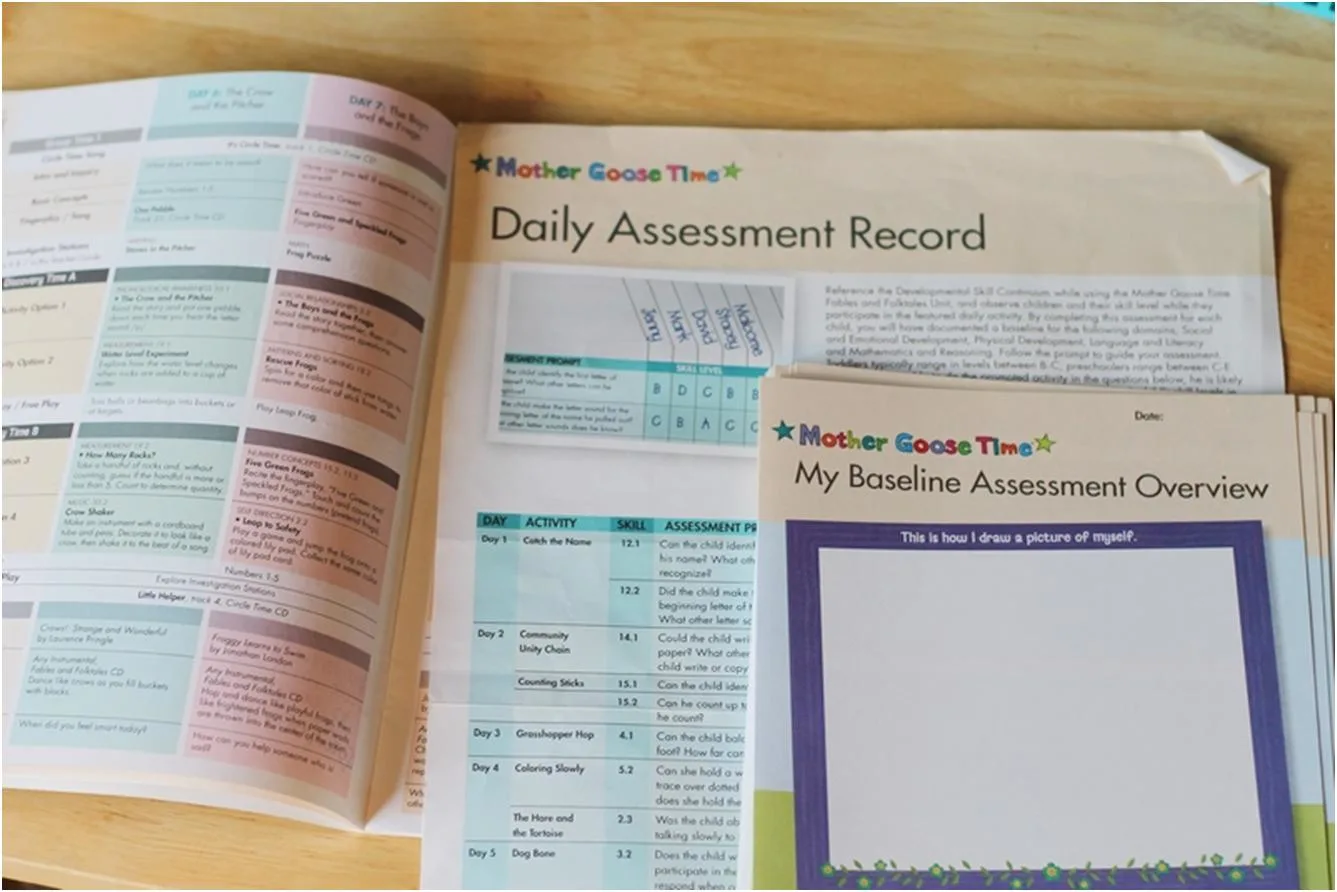
3. Transfer Data to Child’s Baseline Overview Record
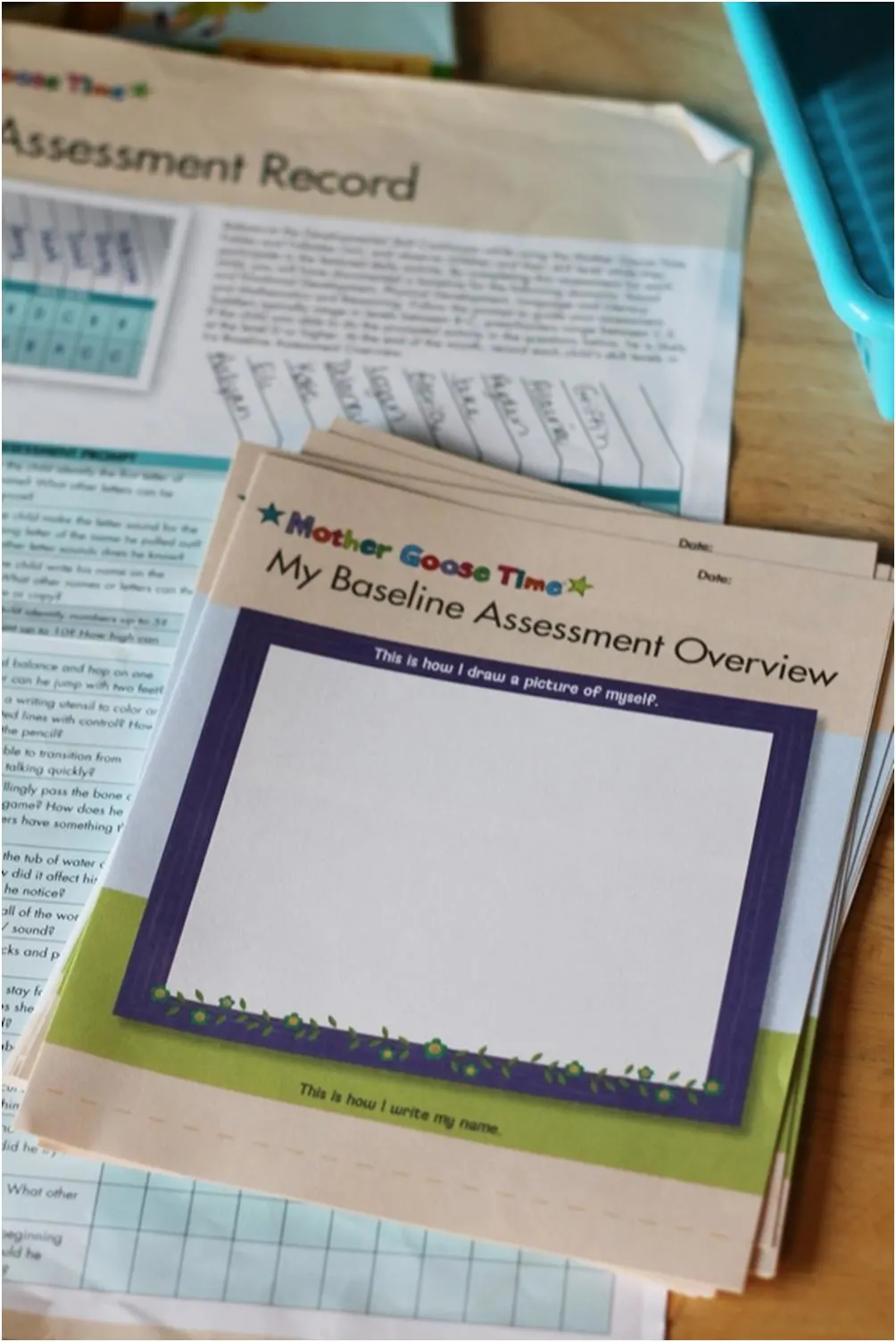
By the end of this month’s unit, the idea is to have collected data on all skill goals withinfour domains of learning: Social and Emotional Development, Physical Development, Language and Literacy, and Mathematics & Reasoning. Transfer the child’s skill levels from the Daily Assessment Record to their individualized Baseline Assessment Overview.

4. Set Individualized Learning Goals: I will set goals for each child monthly based on ongoing assessment and observations.
It is important to include the child’s family in the assessment process. Parents may see different skills at home than we see during the day. A family questionnaire is included for each child. It is suggested that you interview the family using the form. Personally, I will probably just give it to each family to fill out the parts they feel comfortable with and return it to me.
I will show the parents their child’s Baseline Overview and collected work. This is also a good time to share a specific story about how the child participated in at least one activity from each domain. Show any artwork, photos, or videos you might have saved from the unit.

Next Steps:
It is necessary to monitor learning progress throughout the year. You could use the Child Progress Monitoring Report to assist you.
Create Portfolios : Portfolios help make learning visible. It’s a collection of work, observations and examples of progress over time. The Mother Goose Time Tools Skill Observation Schedule and Create-a-Portfolio Guide helps you track what to observe and collect throughout the year. Here’s more about my assessment and portfolios process.
Mother Goose Time also offers trainings at no extra cost with your Mother Goose Time membership.
Just one more great reason to use Mother Goose Time at your preschool or child care!

I received curriculum from Mother Goose Time for honest and authentic stories resulting from my daily experiences using the curriculum. I will continue to share my experiences throughout the 2014/15 school year. After using Mother Goose Time for about 10 years, I am pleased to promote quality educational learning experiences through play with Mother Goose Time!

